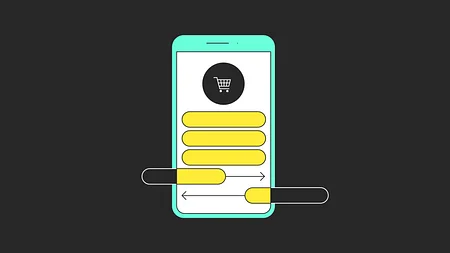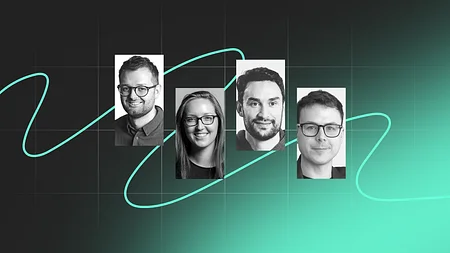Here’s the trend breakdown, including insight from our
11:FS team
- Removing friction from the customer journey
- Rise of InsurTech
- Rise of RegTech
- PSD2 forces banks and FinTech to partner
- Reform of the bank boardroom
- China and emerging markets focus
- Chatbots, machine learning, AI
- FinTech gets integrated with social media
- FinTech gets integrated with the Internet of Things
- Platforms, APIs, and open banking are key
- Blockchain moves out of the labs into the real world
- Bonus! Cybersecurity is a big worry
1. Removing friction from the customer journey
This theme appeared in nearly all the FinTech predictions and trends articles.
In the
2017 Retail Banking Trends and Predictions report, Daryl Wilkinson, Managing Director of DWC Strategy and Innovation, says we'll see "
incumbent retail banks implementing on last year’s promise of a smoother customer experience, beginning with onboarding. Challenger banks and technology firms have put a spotlight on the onboarding process, making this almost frictionless with biometric layers and digitized KYC/AML checks. Challenger banks also set the standard for personalised and contextual experiences. It’s time for all of the fintech/bank partnerships, innovation lab experiments and design studios of incumbent banks to deliver.
“We are seeing challengers across a range of markets take a different approach to onboarding,” adds 11:FS Director of Research Meaghan Johnson.
“In particular, Monese (UK) and Bunq (Netherlands) allow potential customers to register via their app first – in as little as 60 seconds – and then complete the onboarding (ordering a debit card, funding the account, or confirming ID) from the secure part of the app.”
2. Rise of InsurTech
Throughout much of 2016, we saw new InsurTech firms rise from the ranks. Trov, which offers pay-as-you-need insurance services, formed an elite
partnership with AXA Group. As Rob Moffat, Partner at Balderton Capital, says, “
Insurance is an enormous sector, but it’s a tough one to penetrate. B2B software and data businesses are the most likely to capitalise on the immediate opportunities offered by the sector, and we will start to see them do so in 2017.”
According to Meaghan Johnson,
“Traditional banks historically have not capitalised on this product set. There are so many opportunities for an easy cross-sell based on data from customer spend, but also by using the mobile app via GPS. In Sweden we have seen a few banks start to send push notifications offering travel insurance when a customer is at an airport, ferry, or train station.”
3. Rise of RegTech
Tech has also been rising in wealth management and regulations. Although WealthTech was not cited amongst 2017 trends, RegTech was noted by many. “
One of the big barriers to improving things in the RegTech space is the lack of an identity infrastructure, and that seems to have gone up the agenda recently,” says David Birch, Director of Innovation at Consult Hyperion. “
One of the barriers to moving to an open banking infrastructure is we have no identity...I see this kind of arc, the shift towards regulation. One of the key elements of that is doing something about identity, and one of the spurs for getting something done is actually PSD2. I can sort of see those planets are aligning slightly for the next year.”
Henri Arslanian, FinTech and RegTech lead for China at PwC, says, “
Many RegTech solutions are now becoming available to help banks reduce compliance costs. Unlike FinTech, where there is an element of competition between banks, RegTech is an area where everyone could win by cooperating.”
4. PSD2 forces banks and FinTechs to partner
A good example of forcing banks to cooperate with FinTech: the implementation of PSD2 (the Payment Services Directive, Version 2.0). This directive forces banks to offer their data through Application Programme Interfaces (APIs) to trusted third parties, such as Stripe. As 11:FS Co-Founder Jason Bates, says, in the UK, “
We’ve got three new digital banks making a move with Tandem, Monzo, and Starling – all launching Q1. We're not going to see massive penetration, we're not going to see tens of millions of customers moving, but I think we are going to see low-digit millions of people. They are perfectly positioned in the API space to use this as a customer acquisition strategy.”
5. Reform of the bank boardroom
For much of 2016, Chris Skinner was blogging that banks need digital leadership and weren’t fit for purpose. Visual Capitalist illustrates this with
an eye-opening chart indicating most execs have never even heard of their new competitors.
“
CIOs will no longer be the most influential technology decision makers,” predicts David Horton, Head of Innovation at Synechron,
“and the continued rise of the Chief Digital Officer and in many cases the Chief Marketing Officer mean that the business will increasingly usurp the IT team in implementing ‘digital’ throughout the organisation.”
“
The top is important, but so is the bottom, and especially the squeezed middle,” says 11:FS Director of Portfolio Management Aden Davies. “
The smart boards will realise this. Technology success is as much to do with organisational structure as it is with technical know-how.”
6. China and emerging markets focus
According to EY, China has now taken the lead as the #1 FinTech market in the world. Organisations should be looking east for business model innovations that can drive new revenues and sources of profit. New business models, such as Ant Financial and WeBank services, will start influencing FinTech in the U.S. and Europe, as they are driven by mobile money services.
“China’s unique mix of rapid urbanisation, massive and underserved market, e-commerce growth,
explosion in online and mobile phone penetration, and customer adoption willingness have created a fertile ground for innovation in commerce, banking, and financial services more broadly,” says EY Asia-Pacific FinTech Leader James Lloyd.
From
GT News: “
Mobile money services now operate across more than 90 countries, covering 85% of the world’s poorest territories where most of the population lacks access to a formal financial institution. At the last count, more than 270 of these non-bank financial services – mostly run by domestic telecoms operators – had at least 411m registered accounts, empowering people, businesses, and whole economies. These customers are people who have traditionally dealt in cash but are increasingly switching to mobile money accounts, which enable them to send, store, and receive money without a bank account, using just a basic feature phone.”
7. Chatbots, machine learning, AI
After removing friction from the customer journey, the second most common cited trend to watch this year is the rise of chatbots in banking, powered by increasingly intelligent systems based on artificial intelligence (AI) and machine learning. This can make a real difference for banks when it comes to basic everyday customer service interactions and FAQs.
“
Today these are handled by IVR (Intelligent Voice Recording), the recorded voice you hear when you call your bank,” says 11:FS Co-Founder Simon Taylor. “
Customers typically don't enjoy this, but they do enjoy real-time interaction on a mobile device. Answering basic questions this way can save cost and increase customer satisfaction.”
Penny Crossman of
The American Banker, says, “
Costs associated with the advanced computing and data-storage hardware behind AI are plummeting. A growing number of vendors also offer AI tools such as robotic processing automation that can be configured without the help of a rocket scientist. So this is clearly an area more banks will need to pay attention to going forward.”
8. FinTech gets integrated with social media
“
We're going to see payments move further away from banking,” says Jason Bates, “
and continue that trajectory into chat, social, embedded elsewhere. Connected with that, I think we'll also see win-to-sell lending take hold; it just doesn't belong in a banking app – it belongs where customers are. We're going to start seeing that sort of retail finance happen elsewhere. It's going be a major, major thing.”
We have seen the rise of mobile, payments, and social in the forms of Venmo in the U.S., PayTM in India, and WeChat in China. Steven Tong, Managing Director for Startupbootcamp Asia, illustrates the opportunity well, “
WeChat is taking on global e-commerce. The app achieved 700 million global monthly users in the first quarter of 2016. The market domination has allowed them to branch into e-commerce and subsequently FinTech, with 31% of WeChat users making e-commerce purchases through the app.”
9. FinTech gets integrated with the Internet of Things (IoT)
You cannot have FinTech payments in social media via mobile wallets and not start thinking beyond mobile to IoT. Everything is becoming smart, and smart things need smart payment methods. Timothy Li, CEO of Kuber Financial, says, “
The Internet of Things, wearables, smart home, and connected car will bring massive change to the FinTech industry forever. From home improvement financing enabled by leveraging data from smart home sensors, to insure-as-you-drive insurance leveraging real-time driving (human) and traveling (autonomous) behaviour, these unique datasets will bring a whole new set of innovation and the next wave of FinTech startups.”
10. Platforms, APIs, and open banking are key
You cannot have these data architectures based on machine learning, and AI integrated into social mobile and IoT, without a heavy focus on open banking. This is being forced into the banking system in the UK, and has started with PSD2 in Europe. But this year this theme is the underpinning for many others.
As Chris Skinner says, “
2017 will be the year of open marketplaces and platforms. Platforms support the rapid cycle deployment of microservices into a financial marketplace. Those include apps, APIs, and analytics that transform the back, middle, and front office respectively. As the financial world is rapidly moving to open, loosely coupled marketplaces, any bank with old legacy technology will start to look like a dinosaur.”
Aden Davies adds, “
New ecosystems will start to form. We see patterns today from the likes of Xero, who are fast becoming the homepage and default platform for a certain size of business. How will this play out for retail? For corporates? We will start to see early moves.”
11. Blockchain moves out of the labs into the real world
For much of 2014 through 2016, blockchain developments have been focused on learning through proofs of work and proofs of concept. These skunkworks have produced some great insights into the use cases for blockchain, but now those learnings will spill out of the labs into production.
Simon Taylor, who leads blockchain at 11:FS, says, “
There are some things you can see in the tea leaves already. Euroclear announced they're going to be doing gold trading, and the Royal Mint are starting to look at this. T0 has now launched, which is the kind of overstock.com attempt to take back how shares are issued – that is now a real market product. None of these things will have scale, none of these things will be generating massive amounts of profit, but they will be real. So I think for all the people decrying ‘what's the use case with blockchain?,’ there's your answer!”
Blockchain thought leader Oliver Bussmann says, “
2017 will be the ‘year of the pilot’ for blockchain in financial services, as it moves from proof-of-concept into production. We should see this in particular in cross-border payments and trade finance. Overall, however, blockchain will still be restricted to the ‘low hanging fruit’ in banking. I remain convinced that broad-based application of DLTs will happen more quickly outside of financial services.”
Bonus! Cybersecurity is a big worry
This did NOT come out as a common trend, but was cited once or twice. Surprising really, as it’s a key concern for all. As
Bob’s Guide puts it, “
The trend is top of mind for banks and businesses going into 2017 due to consumer protection, credit quality concerns, the new age of capital planning, and increases in cyber threats and attacks.”
“
There is a real chance that a bank will fall in 2017 as attacks get more advanced and the hackers get further inside the network,” Aden Davies says. “
The challenges faced by SWIFT in 2016 show that critical infrastructure is at risk and it only takes a handful of weaknesses to be exploited for major damage to be done.”
There you go, the 11 FinTech and banking trends you need to follow. The
11:FS team will be writing on these themes all year.




